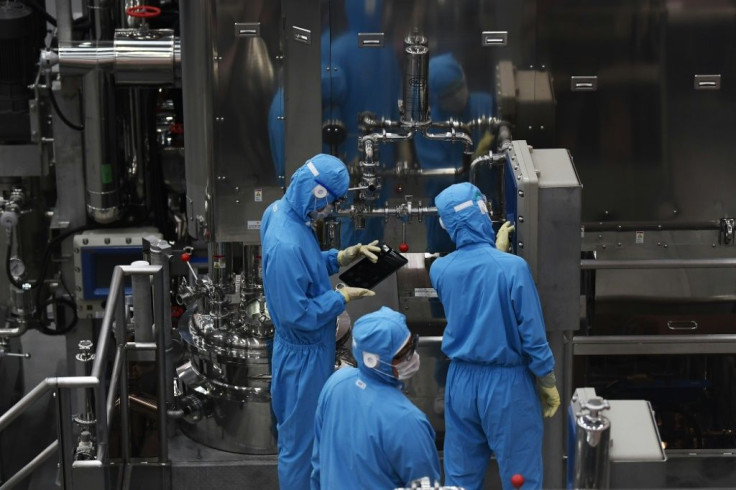Made Up: Japan Cosmetic Giant Shiseido Gambles On 'Made In Japan'

On wasteland once used for earthquake drills in the small town of Otawara north of Tokyo, Japanese giant Shiseido has built its first domestic factory in 36 years, hoping to capitalise on a boom for "Made in Japan" cosmetics.
The Japanese cosmetics industry faces huge competition not only from established players such as L'Oreal and Estee Lauder but increasingly also from the "K-beauty" craze coming from South Korea.
Nevertheless, Japan is more than holding its own, with exports nearly quadrupling since 2013 to 546 billion yen ($5 billion), according to finance ministry figures, nearly two-thirds of that going to China and Hong Kong.
The domestic industry is also benefitting from an explosion of inbound tourism in recent years ahead of the 2020 Tokyo Olympics -- in particular a relaxing of visa requirements for Chinese tourists who lap up the latest Japanese cosmetic fads.
Shiseido chief executive Masahiko Uotani told AFP that a focus on the high end of the market and time-honoured attention to detail set them apart from the foreign brands seeking to dominate globally.
"We are focusing on prestige, premium brands. Consumers in those categories see the value of Japanese culture," said Uotani.
"So strategically, we are telling consumers: those brands are from Japan, it's Japanese R&D. And that is becoming a very important competitive value."
In addition to the new plant in Otawara, Shiseido plans to open two more in Japan before 2022 -- a total investment of 120 billion yen -- the fastest pace of expansion in the firm's 150-year history.
Otawara's mayor said the plot for the new factory had been barren since the 1990 tech bubble burst. "We used to use it to hold exercises to prepare for natural disasters," Tomio Tsukui explained.
The 1,000 jobs it creates will make Shiseido the biggest private employer in the town, Tsukui said, putting it down to a drop in value of the yen that has made relocalising production more profitable.

Norio Tadakawa, Shiseido production manager, has a different explanation. "There are six sake breweries" around Otawara, he says. This is due to the high-quality water around the region -- also a fundamental component in making cosmetics.
The three new Shiseido factories in Japan will feature the latest in Japanese tech -- from advanced robotics to artificial intelligence -- but will also rely heavily on human intervention, especially for the highest-range products.
"Where it's possible we are introducing robots, AI, and digital production capacities. But we still need people, employees that have high craftmanship and skills," said Uotani.
In Otawara for example, while machines fill the bottles, lines of employees in white, blue or pink overalls fix the tops -- there are too many different types of container to automate this process.
Despite the highest labour costs, Shiseido is not the only company to bring back production to its home base. In 2017, Kose Corporation sold its factory in China to boost its presence in Japan.
The gamble on high-cost, high-quality domestically produced goods appears to be working, said Mitsue Konishi, senior innovation analyst at GlobalData.
"With quality ingredients, luxurious formulations, elegant packaging, and craftsmanship, cosmetics with the 'Made in Japan' tag are gaining appeal in Asian and Western markets," she told AFP.
But the flip side of Japanese attention to detail means development times and quality checks take longer, pointed out Shima Yamanaka, analyst at SMBC Nikko Securities.
"The product timeline of Japanese companies is very long. Safety and quality are high but the product checking takes a long time," she told AFP.
For example, Japanese firm Kao on Wednesday unveiled a "spray-on skin" they claim is the world's first but that took 10 years to bring to market.
Even Shiseido's Uotani admits that the nimble South Koreans have the advantage on this front.
"They are good competitors... They are quite efficient, their development time is quite short, which allows them to be very reactive to the market," he said.
© Copyright AFP 2024. All rights reserved.




















